Exploring Various Toilet Options for Your Basement Bathroom - A Comprehensive Guide
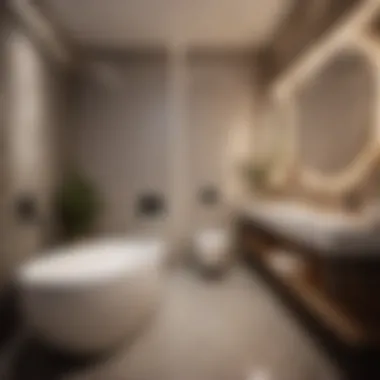

Materials:
- Toilet of choice: Ensure the toilet selected fits the space requirements of your basement bathroom. Consider a space-saving design if the area is compact. Measure the dimensions accurately to avoid any fitting issues.
- Plumbing tools: Have wrenches, pliers, sealing tape, and a level on hand for the installation process. These tools are essential for ensuring a secure and leak-free connection.
- Mounting hardware: Depending on the type of toilet chosen, gather the necessary mounting hardware such as bolts and screws for proper installation.
- Toilet seat: Select a comfortable and durable toilet seat that complements the design of your basement bathroom.
DIY Steps:
- Measure the space: Before purchasing a toilet, measure the available space in your basement bathroom to determine the appropriate size and style that will fit seamlessly.
- Select the type of toilet: Consider options such as traditional gravity-fed toilets, pressure-assisted toilets, or composting toilets based on your preferences and requirements.
- Prepare the area: Clear out the space where the toilet will be installed, ensuring there are no obstructions that could hinder the installation process.
- Install the toilet flange: Secure the toilet flange to the floor using suitable screws, ensuring it is level and properly positioned for the toilet connection.
Technical Aspects:
- Timing specifics: Allocate sufficient time for the installation process, keeping in mind that accurate and precise work is crucial for a successful outcome.
- Tools: Utilize a wrench to tighten connections, a plunger for any unexpected blockages, and sealant tape for ensuring leak-proof joints.
- Critical techniques: Pay attention to the alignment of the toilet with the flange, ensuring a proper seal for efficient flushing and minimal maintenance.
DIY Project Process:
- Mount the toilet: Carefully lift and position the toilet over the flange, making sure it aligns correctly. Secure the toilet in place using the provided mounting hardware.
- Connect the plumbing: Attach the water supply line and ensure a tight connection, checking for any leaks before proceeding with the final installation.
- Test the toilet: Flush the toilet to confirm proper functionality and check for any leaks around the base. Make any adjustments as necessary for optimal performance.
Troubleshooting Tips:
- In case of leaks: Check the connections and seals for any signs of leakage, ensuring everything is tightly secured to prevent water seepage.
- Uneven flushing: Adjust the flush mechanism if the toilet is not flushing evenly or experiencing inconsistent water flow.
- Odor issues: If there are unpleasant odors, ensure the wax ring is properly sealed and the toilet is securely fastened to the flange to prevent any leaks or smells.
I. Introduction
When it comes to designing a basement bathroom, one of the crucial decisions that homeowners face is selecting the right toilet. The choice of toilet can significantly impact both the functionality and aesthetics of the space. In this article, we will delve deep into exploring various toilet options suitable for basement bathrooms, considering different types, styles, and factors that play a key role in this decision-making process. By understanding the importance of this choice, homeowners can create a functional and stylish bathroom that meets their specific needs and enhances the overall value of their property.
A. Setting the Context for Basement Bathrooms
Basement bathrooms often present unique challenges and opportunities compared to bathrooms on upper levels of the house. The location of a basement bathroom brings about considerations related to plumbing, ventilation, and design choices. Since basements are typically below ground level, ensuring proper drainage and water flow is essential to prevent issues such as flooding, mold growth, and musty odors. Additionally, basement bathrooms can serve as convenient additions for homeowners seeking to expand their living space and increase the overall functionality of their homes.
B. Importance of Selecting the Right Toilet
Among the various fixtures in a bathroom, the toilet holds significant importance due to its frequency of use and essential role in personal hygiene. Selecting the right toilet for a basement bathroom involves considering factors such as space constraints, plumbing requirements, water efficiency, style, design, and budget considerations. The chosen toilet should not only fit the available space but also complement the overall design aesthetic of the bathroom. By choosing a toilet that meets these criteria, homeowners can elevate the comfort and functionality of their basement bathroom while ensuring a seamless and enjoyable user experience for all occupants.


II. Types of Toilets
A. Standard Floor-Mounted Toilets
Standard floor-mounted toilets are a popular choice for basement bathrooms due to their traditional design and ease of installation. These toilets are connected directly to the floor, providing stability and support for everyday use. Considered a staple in most households, they offer a familiar and comfortable experience for users. When selecting a standard floor-mounted toilet for your basement bathroom, factors such as water efficiency, flushing power, and comfort are essential.
B. Wall-Mounted Toilets
Wall-mounted toilets are a modern and space-saving option for basement bathrooms, where maximizing square footage is key. These toilets are mounted directly onto the wall, allowing for easy cleaning of the bathroom floor and a sleek, minimalist look. Wall-mounted toilets also offer adjustable seat heights, making them a versatile choice for homeowners of varying heights. While their installation may require extra structural support within the wall, the aesthetic benefits and space optimization make them a desirable option for many.
C. Upflush Toilets
Upflush toilets are innovative solutions for basement bathrooms located below the main sewer line. These toilets feature a macerator pump that liquefies waste before pumping it upward to connect with the main sewage system. This unique design eliminates the need for costly and invasive below-ground plumbing modifications, making upflush toilets a practical choice for basement conversions. Additionally, their flexibility in installation locations provides homeowners with more design freedom when planning their basement bathrooms.
D. Compact Elongated Toilets
Compact elongated toilets combine the ergonomic benefits of elongated bowls with a space-saving design tailored for smaller bathrooms, such as basement restrooms. These toilets offer enhanced comfort and a more efficient flushing process compared to round-bowl toilets. The elongated shape provides additional room for users while maintaining a compact footprint, making them suitable for limited basement spaces. When considering a compact elongated toilet, take into account the size of your bathroom, the comfort of the bowl shape, and the ease of cleaning for a practical and comfortable restroom experience.
III. Factors to Consider
When it comes to selecting the right toilet for your basement bathroom, there are several crucial factors to consider to ensure you make an informed decision that aligns with your specific needs and constraints. Understanding these key elements can help you navigate through the myriad of options available in the market and narrow down your choices effectively.
A. Space Constraints
One of the primary considerations when choosing a toilet for your basement bathroom is the space available. Basement bathrooms typically have limited square footage compared to main floor bathrooms, which may require you to opt for space-saving toilet designs such as wall-mounted toilets or compact elongated toilets. Assessing the dimensions of your basement bathroom accurately is essential to determine the most suitable toilet that can fit comfortably without compromising functionality or aesthetics. Consider aspects like clearance around the toilet, door swing, and overall layout to ensure a seamless installation that maximizes space utilization.
B. Plumbing Requirements
Another critical factor to take into account is the plumbing requirements of your basement bathroom. Since basements are situated below ground level, the plumbing configuration may differ from traditional bathrooms on higher floors. Understanding the plumbing layout, venting needs, and waste drainage systems is essential to choose a toilet that can be installed effectively within the existing plumbing infrastructure. Consider consulting with a professional plumber to assess the feasibility of your desired toilet choice and ensure compatibility with the basement plumbing system to avoid costly modifications or installations.
C. Water Efficiency
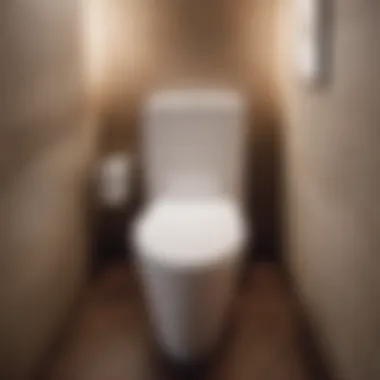
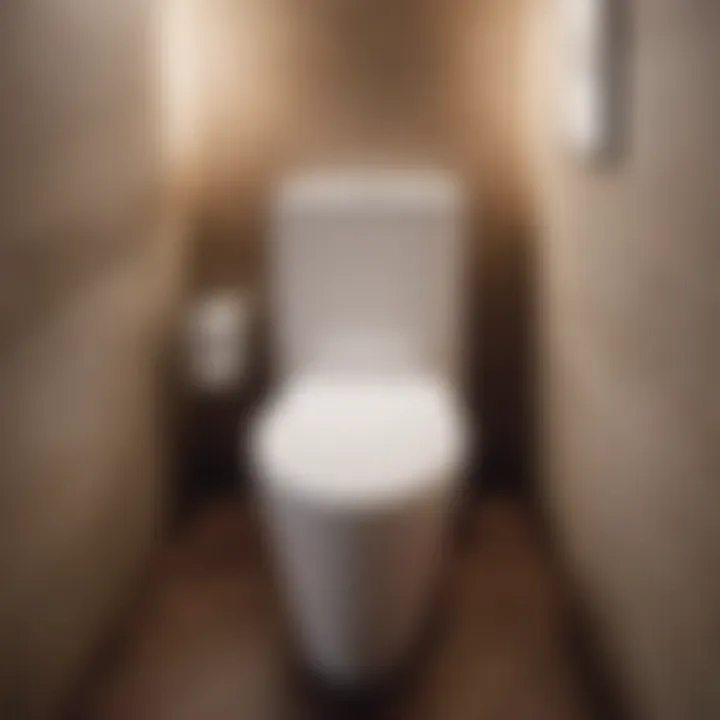
In today's environmentally-conscious era, water efficiency is a significant consideration when selecting a toilet for your basement bathroom. Opting for a toilet with high-efficiency flushing mechanisms can not only reduce water consumption and utility costs but also contribute to sustainable practices within your household. Look for toilets with WaterSense certification or dual-flush functionality to minimize water wastage while maintaining optimal performance. Understanding the water usage per flush and efficiency ratings can help you make an environmentally responsible choice that aligns with modern standards and regulations.
D. Style and Design
The style and design of the toilet play a pivotal role in enhancing the overall aesthetics and functionality of your basement bathroom. Consider the existing decor, theme, and ambiance of your basement space to select a toilet that complements the overall design scheme seamlessly. Whether you prefer a contemporary, minimalistic look or a more traditional aesthetic, choosing a toilet that harmonizes with your personal taste and interior style can elevate the visual appeal of the bathroom. Factors such as bowl shape, seat height, and flushing mechanisms should also be considered to ensure both comfort and visual appeal are met.
E. Budget Considerations
Last but not least, setting a budget for your basement bathroom toilet is essential to make a financially prudent decision without overspending or compromising on quality. Establishing a clear budget range can help narrow down your options and focus on toilets that not only meet your functional requirements but also align with your financial constraints. Consider factors like initial purchase cost, long-term maintenance expenses, and potential savings from water-efficient features to determine the overall cost-effectiveness of each toilet option. While it's important to prioritize quality and performance, finding a balance between cost and functionality is key to selecting the best toilet that offers value for your investment.
IV. Installation Process
When it comes to installing a toilet in your basement bathroom, the process is a crucial step that requires careful consideration and execution. Proper installation ensures the functionality, efficiency, and longevity of your toilet, making it essential to grasp the intricacies involved in this task. Whether you opt for a do-it-yourself approach or enlist the help of professionals, understanding the installation process is paramount.
A. DIY vs. Professional Installation
When contemplating the installation of a toilet in your basement bathroom, one of the primary decisions you'll face is whether to undertake the installation yourself or hire a professional plumber. DIY installation can be a cost-effective option if you possess the necessary skills and expertise. It allows you to have full control over the process and can be a rewarding experience for those inclined towards hands-on projects.
On the other hand, opting for professional installation guarantees precision and adherence to plumbing standards. Plumbers bring in-depth knowledge, experience, and specialized tools, ensuring that the installation is carried out efficiently and correctly. While this option may incur additional costs, it offers peace of mind and reduces the risk of potential errors that could lead to future complications.
B. Necessary Tools and Materials
Before embarking on the installation of a toilet in your basement bathroom, it's essential to gather all the necessary tools and materials required for the task. Common tools needed for toilet installation include a wrench, screwdriver, measuring tape, level, bucket, wax ring, bolts, toilet flange, and caulking gun. Materials such as sealant, Teflon tape, and water supply lines are also essential to ensure a successful installation process.
Ensuring that you have the right tools and materials on hand prior to beginning the installation will streamline the process and prevent delays or interruptions. By being organized and prepared, you enhance the efficiency and effectiveness of the installation, ultimately leading to a well-installed and functional toilet in your basement bathroom.
C. Steps for Installing a Basement Toilet
The process of installing a toilet in your basement bathroom entails several sequential steps that must be followed diligently to achieve optimal results. Initially, ensure that the rough-in dimensions align with the toilet you've chosen and that the plumbing meets the necessary requirements. Next, assemble the necessary tools and materials and prepare the area for installation.
Commence by installing the closet bolts and wax ring onto the flange, followed by carefully lowering the toilet onto the bolts and creating a secure seal. Once the toilet is in place, tighten the bolts, connect the water supply line, and affix the tank lid. Finally, test the toilet for leaks and functionality before sealing any gaps with caulk.
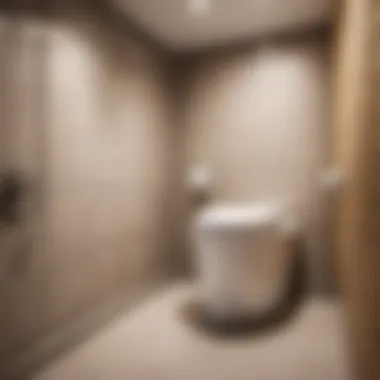
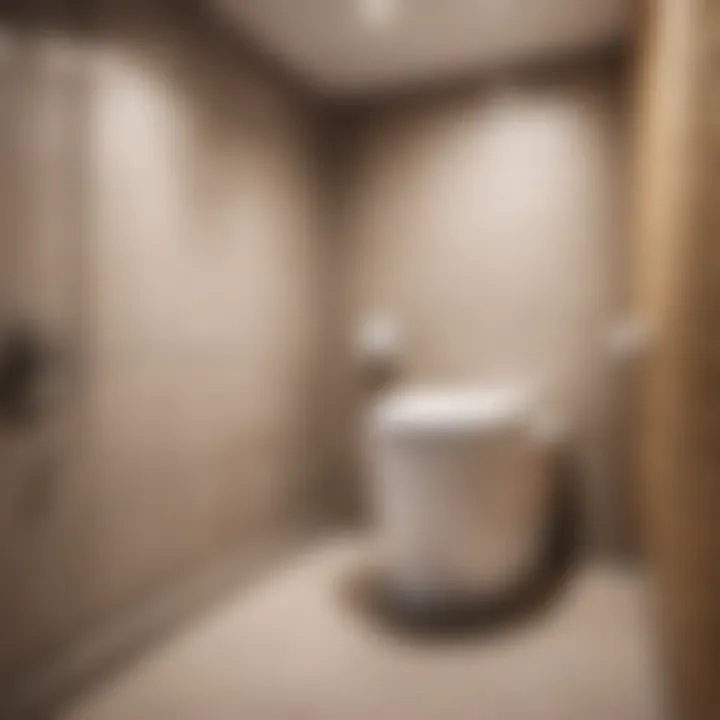
By meticulously following each step in the installation process, whether opting for DIY or professional installation, you ensure that your basement bathroom toilet is installed correctly, functions optimally, and adds both practicality and aesthetic appeal to your space.
V. Maintenance Tips
Upon completing the installation of your basement bathroom toilet, it is essential to prioritize maintenance to ensure its longevity and optimal performance. This section explores crucial maintenance tips that will help you keep your toilet in top condition, addressing regular cleaning practices, handling common issues, and ensuring the longevity of your toilet.
A. Regular Cleaning Practices
Proper and consistent cleaning practices are fundamental for maintaining a hygienic and pleasant bathroom environment. To prevent the buildup of grime, limescale, and stains, it is recommended to clean your toilet at least once a week using a mild toilet cleaner or a mixture of vinegar and baking soda. Pay special attention to areas around the base, under the rim, and inside the bowl to eliminate bacteria and odors effectively.
Moreover, incorporating a toilet brush with sturdy bristles and a toilet bowl cleaner can simplify the cleaning process and ensure thorough sanitation. Regularly disinfecting the toilet seat, handle, and flush lever with disinfectant wipes or sprays also contributes to a germ-free environment.
Remember to avoid using abrasive cleaners or harsh chemicals, as they can damage the toilet's surfaces. Additionally, maintaining proper ventilation in the bathroom can aid in preventing mold and mildew growth around the toilet area.
B. Handling Common Issues
Despite regular maintenance, your basement toilet may encounter common issues such as clogging, running water, or leakage. When faced with a clog, refrain from using harsh chemicals and opt for a plunger or plumbing snake to dislodge the blockage gently. For persistent clogs, consider using a plumbing auger to reach deeper obstructions.
In cases of continuous running water or leaks, inspect the toilet tank components for potential issues. Issues with the flapper, fill valve, or float mechanism can lead to water wastage and inefficiency. Replacing faulty parts or seeking professional assistance can rectify these problems and ensure the optimal functioning of your toilet.
C. Ensuring Longevity of Your Toilet
To prolong the lifespan of your basement bathroom toilet, adopting preventive measures and periodic inspections is vital. Regularly check for signs of wear and tear on internal components such as the flapper, flush valve, and seals to address minor damages promptly.
Moreover, practicing water-saving habits, such as repairing leaks promptly and avoiding flushing non-biodegradable items, can contribute to the longevity of your toilet and reduce water wastage. Additionally, scheduling professional maintenance checks annually can help identify potential issues early and prevent costly repairs in the future.
By implementing these maintenance tips and proactive measures, you can ensure the longevity, efficiency, and hygienic upkeep of your basement bathroom toilet, enhancing the overall usability and comfort of your restroom space.
VI. Conclusion
A. Recap of Key Points
As we wrap up our in-depth journey into the realm of basement toilet options, it is crucial to recapitulate the crucial aspects covered. From understanding the different types of toilets available suited for basement spaces to analyzing the factors that play a significant role in decision-making, this section revisits the fundamental points presented. By summarizing the importance of space considerations, plumbing requirements, water efficiency, design preferences, and budget constraints, readers are encouraged to reflect on the key pillars influencing their toilet selection process, ensuring a holistic approach to their decision-making.
B. Final Thoughts on Choosing the Right Toilet
Making the final decision on the right toilet selection for your basement bathroom can be a daunting yet rewarding process. As we conclude this discourse, it is imperative to emphasize the significance of choosing a toilet that not only matches the functional needs of the space but also aligns with the aesthetic preferences and budget constraints of the homeowner. By acknowledging the importance of investing in a toilet that balances water efficiency, easy maintenance, and durability, individuals can elevate their basement bathroom experience and create a harmonious blend of functionality and style. Remember, the ultimate goal is to select a toilet that not only fits seamlessly within the space but also enhances the overall ambiance and convenience of the area.







